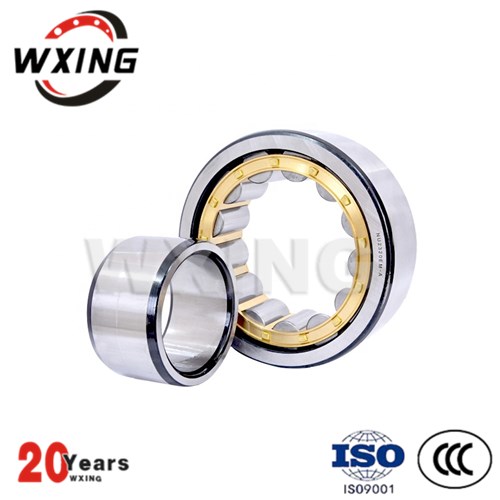CONTACT US
Zhejiang waxing electromechanical co.LTD.,Factory located in Shandong,Headquarters located in Zhejiang,China.
 Manufacture all kinds of rolling bearing rings and rolling steel.Bearing rotation under high alternating stress, in addition to the material requirements of high compressive strength, contact fatigue strength and wear resistance, but also have a certain toughness, corrosion resistance, good dimensional stability and process.
Manufacture all kinds of rolling bearing rings and rolling steel.Bearing rotation under high alternating stress, in addition to the material requirements of high compressive strength, contact fatigue strength and wear resistance, but also have a certain toughness, corrosion resistance, good dimensional stability and process.
High carbon chromium bearing steel first appeared in Europe in 1901.The United States listed it as standard steel in 1913.Over the past 70 years, many new processes have been developed to improve the purity of bearing steel and the heterogeneity of carbide. Technologies such as vacuum degassing and off-furnace refining have been widely used in the production of bearing steel.China began producing bearing steel in 1951.
Modern rolling bearing steel can be divided into four categories: high carbon chromium bearing steel, carburized chromium bearing steel, stainless bearing steel and high temperature bearing steel.High carbon chromium bearing steel is widely used in the bearing manufacturing industry.
High purity of alloying elements and good uniform structure are the main quality indexes of bearing steel. Therefore, the non-metallic inclusions and non-uniformity of carbides in bearing steel are qualified in the steel standard according to different use conditions.
Carbon is the main strengthening element in bearing steel.The carbon content of bearing steel is generally high, and the service state is mainly based on cryptocrystalline needle and fine crystalline acicular martensite. A certain amount of quenched undissolved carbide is retained in the structure to improve the wear resistance of the steel.If the carbon content of steel is appropriately reduced, the solubility of alloy elements in the matrix can be increased. Although the number of quenched undissolved carbide is reduced, the hardenability and contact fatigue strength of steel can be improved; on the contrary, the increase of carbon content is beneficial to the wear resistance of steel.Therefore, the carbon content of bearing steel is determined according to different USES, usually controlled within the range of 0.8 ~ 1.2%.
Chromium is the main element in the formation of carbides.High carbon chromium steel forms MC type carbide (M for metal) under various heat treatment conditions.Chromium can improve the mechanical properties, hardenability and microstructure uniformity of steel.It can also increase the corrosion resistance of steel.Chromium content in steel is generally not more than 2.0%, molybdenum can replace chromium in steel, in increasing the hardenability of steel, molybdenum is stronger than chromium, so has developed high hardenability of molybdenum high carbon chromium bearing steel.
Silicon and manganese can increase hardenability in bearing steel.The typical steel number used for silicon and manganese is GCr15SiMn.Manganese can also form stable MnS with sulfur in steel, and sulfur compounds can often surround oxides, forming composite inclusions with oxides as the core, reducing the harmful effect of oxides on steel.
Production process bearing steel is usually smelted in an alkaline electric furnace, or it can be degassed by vacuum outside the furnace or refined by ladle vacuum.The ingot casting process and ingot shape design of bearing steel have great influence on the distribution of nonmetallic inclusions and carbide in steel.Bearing steel is liable to produce white spots, so ingot and billet should be cooled slowly.High quality bearing steel for aviation use should be smelted by special methods such as electroslag remelting or vacuum consumable remelting.
In order to improve carbide segregation, long time diffusion annealing is usually carried out at 1200 ~ 1250 high temperature for bearing ingot.During hot processing, the furnace atmosphere should be controlled. The heating temperature of the billet should not be too high, and the heat preservation time should not be too long, so as to avoid serious decarbonization.The final rolling (forging) temperature is usually between 800 and 900, too high is easy to appear large network carbide, too low is easy to form rolling (forging) crack.The finished products of rolled (forged) wood should be cooled to 650, so as to prevent the cementite from being separated in a network at the grain boundary. Controlled rolling process can be adopted when conditions permit.
In order to obtain good machinability and premicrostructure before quenching, the bearing steel used for cold machining should be completely spheroidized and annealed at a temperature of 780 ~ 800, and decarbonization should be prevented during annealing.If there is too thick network cementite in rolled steel, normalizing treatment should be carried out before annealing.Chromium bearing steels are usually heated between 830 and 860, oil quenched, and tempered between 150 and 180.In the structure of precision bearing, the residual austenite volume should be reduced as much as possible or the residual austenite should be kept stable in the process of use. Therefore, cold treatment at -80(or lower temperature) after quenching and long-term stabilization treatment at 120 ~ 140 are often required.
Copyright © 2025 Zhejiang waxing electromechanical co.LTD. | All Rights Reserved Design
Hello, please leave your name email or WhatsApp here before chat online so that we won't miss your message and contact you smoothly.